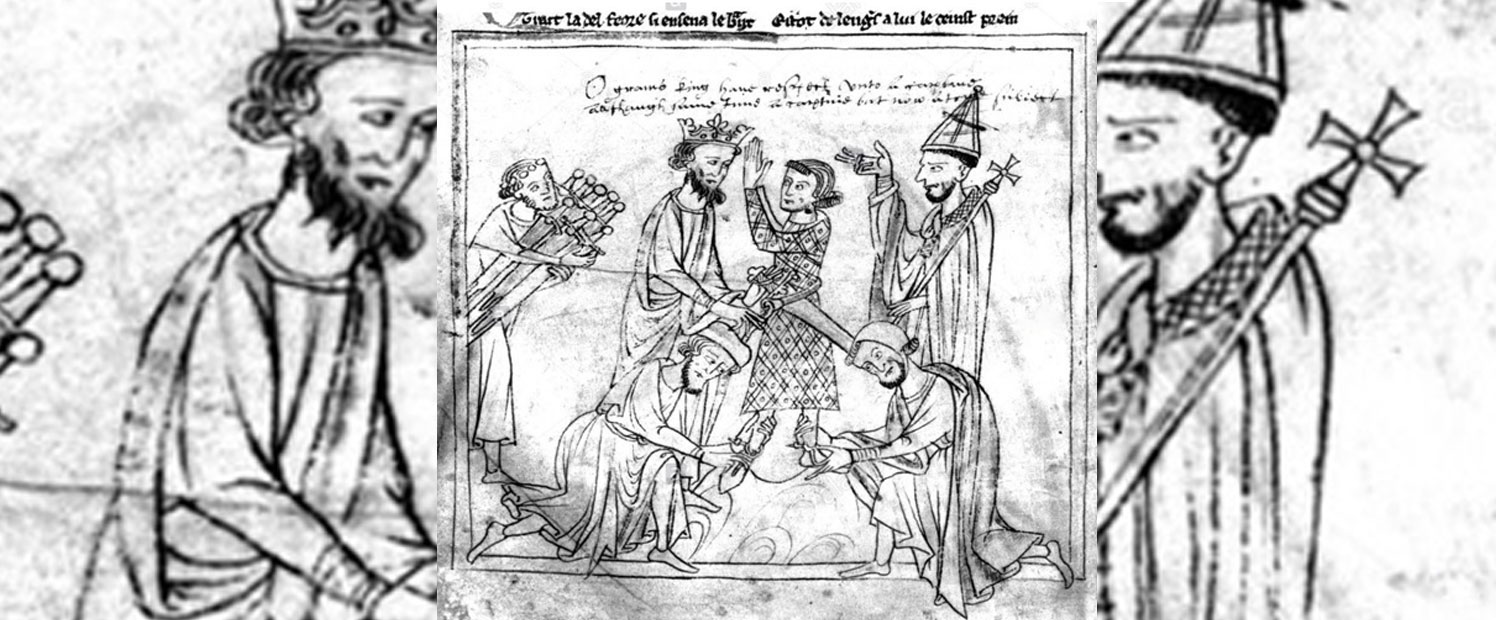The song of Aspromonte is a chanson de geste that belongs to the Carolingian cycles. It narrates the expedition of Charlemagne in Southern Italy against the King of the Saracens, Agolant.
The epic poem, which acts as a prologue to the best-known Chanson de Roland, dates back to the mid-twelfth century. Its title and setting come from Aspromonte, and more specifically, an old narrative of the Norman period.
La chanson d’Aspremont is considered one of the greatest works of Norman medieval literature and is composed of 28 songs. It tells of the love story between Ruggieri and Gallicella, while the city of Risa (Reggio Calabria) falls into the hands of the Saracens. The young Rolando starts his career as a knight in Aspromonte.

The historical context
The historical documents from the period tell us that the Saracens have, at some point in the second half of the ninth century, entirely conquered the Planitiae Sancti Martini and are attested at Sant’Agata, today Oppido, from the northern part of the Tyrrhenian area and in Gerace (north-east, on the Ionian side), but not the centre of Aspromonte, not even in the highest areas. In this way, the Saracens have almost closed Aspromonte in a circle, leaving, however, pockets of resistance (such as the castle of Santa Cristina that is not conquered and much of the mountain where the strong guerrilla warfare occurs, according to the most reliable theories of the Byzantine military from the time). With the exclusion of the ridges, this encirclement was made around Aspromonte through the “wall” (ideally not of stones or bricks) with which the Saracens would surround - almost entirely - the mountain.
Rightfully among the Chansons des gestes
Unlike the Chanson de Roland (11th century), where the figure of the paladin as saint and martyr of the Christian church is highlighted, the purpose of singing the song set in Aspromonte is to celebrate the warlike vocation of the Normans who at that time reigned over Calabria, placing themselves as ideal successors of the Carolingian lineage. The ideology behind the poem is aimed at having the soldiers under the orders of Altavilla recognise this role, and it is no coincidence that the song is sung for the first time under the stands of the Castle of Reggio at the passage of the crusaders commanded by Richard the Lionheart and directed towards the Holy Land.
The Plot
The background of the song is the contrasted love of Ruggieri di Risa (Ruggero di Reggio) for Gallicella, warrior girl, daughter of the Muslim King Agolant; after several adventures, the beautiful beloved will convert to Christianity by marrying the King. However, his brother, Beltrame, kills Ruggero out of jealousy, as well as King Agolant, in order to win Gallicella’s love; she, however, manages to escape, giving birth to twins fathered by her beloved, Ruggero (in his memory) and Marfisa. Gallicella dies shortly after giving birth. Marfisa and Ruggero (the son) will become characters in the later works of Boiardo and Ariosto.
It is Ariosto himself, who kept a copy of the poem in his personal library, to quote it in his masterpiece: Orlando Furioso. In canto XII, line 43 it is possible to read a clear reference:
— Dunque (rispose sorridente il conte)
Ti pensi a capo nudo esser bastante
Far ad Orlando quel che in Aspramonte
Egli già fece al figlio d’Agolante?
Anzi credo io, se tel vedessi a fronte,
Ne tremeresti dal capo alle piante;
Non che volessi l’elmo, ma daresti
L’altre arme a lui di patto, che tu vesti. —
NdT: In canto XII, line 43, reference is made to the Chanson and specifically to King Agolant and Aspromonte.
The character of the boy Orlando is particularly important in history. When the Saracens go to King Charlemagne and herald a great battle in Aspromonte to conquest the South, Orlando wants to fight with Christian paladins, but this is forbidden because of his young age. Orlando still manages to escape from the Castle of Reggio, and, in battle, proves his worth by saving the life of Charlemagne himself. The latter, in a singular struggle with Almonte, son of Agolant, runs the risk of succumbing to his death: with a blow of a stick, however (since his age prevents him from surrounding him with a sword), the boy hero knocks down his opponent and, snatching the sword from his hand, kills him. Charlemagne donated Durendal’s sword of the fallen and his horse, Vaillantif, to the victorious boy; then, with Agolant’s death and his triumphal return to France, the poem ends.
La Chanson and its Success in Medieval Europe
There are as many as twenty-four manuscript codes for Chanson d’Aspremont, in six different languages, which testify to its success that is still shared today. The legend was quickly and widely spread throughout Northern Europe: first in Norway, where it was accepted in the Karlamagnus Saga; then in Sweden and Denmark. In Italy, there was soon an editorial in “ottava rima”, preserved in a manuscript of the National Museum of Florence, which was followed, at the end of the 15th century, by another editorial also in “ottava rima” that was printed many times.
Finally, the subject for a large prose novel, with the inclusion of many new characters and motifs, were drawn from the popular author of Reali di Francia, Andrea da Barberino.
